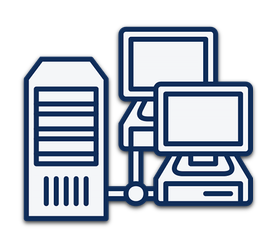5 Technical Skills Every New Blogger Should Have in 2016
When you make the decision to become a blogger, you’re also making the decision to take on some tech skills that might make you a little uncomfortable at first. Shoot, when I first started blogging I honestly had no idea what HTML was. Whenever I looked at the code, I started to sweat. Five years later, I’m making my living off of HTML.
You always have the option of outsourcing the technical aspects of your site, but taking theses tasks on yourself gives you 100% control over your blog. Plus you’ll be gaining a valuable new skill set that can open new doors and lead to exciting possibilities. With that being said, let’s take a closer look at some of the skills every new blogger should get familiar with.
HTML
Let’s face it, computer code can be intimidating if you’ve never been exposed to it. But if you take the time to learn and digest HTML, it becomes much easier to comprehend and apply. As you begin to build your blog, you’ll notice that HTLM is a key component to the layout of your blog and your posts.
HTML stands for Hyper Text Markup Language and is a type of technology that’s used to create web pages. Think of it like this, a web page is actually a digital document that can be made up of various types of formats and languages. HTML being one of those languages. Whenever you open a web browser, the browser reads the HTML markup language and interprets it into a visual or audio representation of the code. That’s how you’re able to actually see a web page.
HTML also provides the structure of a web page which consists of elements and tags. These are the building blocks of HTML that allow content to be introduced into a web page. Now, if any of this is starting to make your head spin, don’t worry I’ve been there. But once you start playing around with HTML, you’ll begin to get a better understanding of how the Internet works. This is extremely beneficial to anyone starting a blog.
One way to get started with HTLM is to visit W3Schools HTML Tutorials. This is a free resource that let’s you get your hands dirty and experiment with how HTML works. There’s even a built-in HTML editor that lets you adjust the code and view the results. This is a great tool for anyone who’s a hands-on learner.
Search Console (Webmaster Tools)
Search Console, formerly known as Google Webmaster Tools, is a free service offered by Google that allows you to monitor the performance of your site and keep an eye on how you’re doing in Google’s search results. It’s a crucial component to the health of any blog, and I’d go as far to say that it’s necessary to have if you want to improve your blog’s ranking within Google’s search results.
Google does a great job at helping newbies out with understanding the ins and out of Search Console. They offer resources, videos, and documents aimed at not only improving your blog’s search rank, but enhancing the overall health and performance of your blog as well.
I highly recommend that you enroll in Google’s Webmaster Academy. It’s 100% free and it will give you a much better understanding of how Google search works and how to structure your site so that you’re positioning yourself for success. Each module is about 1 hour and you can go at your own pace. It is something that definitely helped me out and helped me build a more powerful blog.
Google Analytics
Another great service offered by Google is Google Analytics. This is a free service that allows you to monitor and track your blog’s traffic, among many other things. Google also offers a premium version, but if you’re just starting out, the free version is more than enough to get you started. There’s a bit of a learning curve to Google Analytics, but just like Search Console, Google does a great job at providing a ton of support.
As you get more comfortable with the Google Analytics interface, you’ll begin to see the benefits of collecting and monitoring data. Having the ability to collect visitor data, and then make decisions based off of that data, is crucial to your long- term success as a digital marketer. Google Analytics helps you make better decisions and provides features that will boost your blog’s overall performance.
I recommend taking a little bit of time to read through their support documents so that you can get acclimated to how Google Analytics works. It’s fairly easy to get started, but once you’ve implemented the GA tracking code on your blog, you’ll begin to see how powerful Google Analytics really is.
FTP
FTP stands for File Transfer Protocol, and without getting too nerdy, think of it this way. FTP allows you to transfer files from your computer (local site) to your blog’s server (remote site). All you need is an FTP client and you can easily transfer files from one computer to another.
What is an FTP client? Well, it’s basically a software application that lets you log into a remote FTP server and move files around. There are a lot of FTP client options out there, but you can’t go wrong with FileZilla. It’s a free open-source FTP client that let’s you easily drag and drop files to and from your computer and remote server.
If you’re using Bluehost (affiliate link) as your web host, which I highly recommend, then your FTP client (FileZilla) will be super simple to connect to their FTP server. All you need to do is set up your FTP account with Bluehost, download FileZilla, and then connect to the FTP server. If you're shaking your head while reading this, no worries. Just swing by Bluehost's knowledge center. They have some great support documents that walk you through the entire process.
Video Production
Engaging your audience is a vital component to any successful marketing campaign. One of the best ways to increase engagement 10X is by implementing video into your blog. There are numerous ways to go about it, but some of the most popular video marketing campaigns are done through video Facebook ads, YouTube channels, live streaming events, webinars, and video landing pages.
Learning how to use video marketing can range from being super simple to super complicated. It really depends on how you end up using it. If you’re only using a YouTube channel, then you can easily record and upload videos to YouTube all from your smartphone. But, if you’re looking for something that has a higher production value, then you’re going to need to get acquainted with some more technical aspects of video.
Recording a video is more than just setting up a camera and pressing the record button. I realize that smartphones can produce some decent video, but there are some other things to take into consideration when shooting a video. For example, lighting, sound, camera equipment, editing, and the physical location of your shoot are all things you’ll need to think about before you begin to get serious about video production. Swing by my resources page and check out my video section for all the tools I use for my video marketing campaigns.
With that being said…
Owning and operating your own digital business, a.k.a. your blog, has inherent challenges. But having the proper tech skills will pay huge dividends down the road. It may be tough at first, but learning a new skill set will not only save you time and money, it will empower you to take full control of your digital business. I encourage you to learn as much as you can about each one of these tech skills, and I wish you the best of luck on your new digital venture!

Written by Ben Cummings
Founder of blogwithben.com
Ben is a Digital Marketing and CMS Specialist for Bridgepoint Education who holds an MBA with a specialization in Entrepreneurship. He enjoys teaching, blogging, startups, a hoppy IPA, and college basketball. Whenever he's not blogging, you can find him cruising around sunny San Diego with his amazing family.




